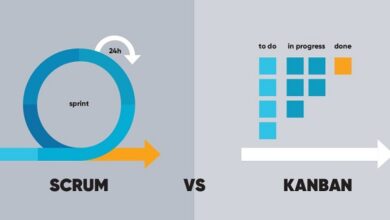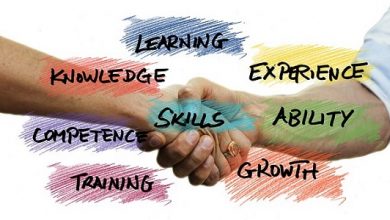What are variable costs/ How to calculate/Methods/Importance
What are variable costs?
Variable costs are the values that change according to the production and flow of the company. It will always follow the volume changes , regardless of whether it is a company, restaurant, store or similar.
Therefore, if the monthly production level is high, the costs will also increase. But, if there is a lower record , obviously, the variable expenses will decrease.
Some people can get a little lost with this part, but deep down it’s a matter of financial control that ‘s very simple to understand. A tip is also to use the pp to pay bills in bars and restaurants, there are several options so that the customer can have security and flexibility when paying the bill.
What are variable costs?
We already know that variable costs are the values that will change according to the productivity of a site. But what are these costs? This will depend on each enterprise, as each has its own way of operating.
Therefore, if it is the case of a delivery restaurant , for example, which has increased its sales in a month, it is very likely that it will have more expenses with packaging.
Therefore, there will be a variation in costs in relation to packaging for delivery.
However, there are some general expenses and expenses that tend to fluctuate and fit as variable costs, such as:
- Labor;
- sales commissions;
- packaging;
- remittances;
- Credit Card Fees.
Remember that to identify if there was even a variation in the values it is necessary to make a calculation. It is not enough just to observe, it is necessary to rely on the help of numbers to be as accurate as possible.
How to calculate variable costs?
To know how to calculate variable costs, it is possible to choose three application methods.
Using any of them will help optimize your business and identify all costs within your company.
In addition to knowing what types of costs are, performing the calculation can also make your management more efficient.
Here are some ways to calculate variable costs:
Calculation of variable costs: Variable costing method 1
- The first step is to identify fixed and variable costs ;
- Choose a time period and add up all variable expenses for a period ;
- Then, divide the variable expenses by the production volume.
Calculation of variable costs: Variable costing method 2
- Identify your company’s mixed costs. These costs are those that can be either variable or fixed ;
- Measure production activity and cost ;
- Calculate the proportion of variable expenses. To make this calculation, use the following variable cost formula:
CC
VCR=______
pp
| C= cost of the highest production months
c= cost of the lowest production months P= highest production level p= lowest level of production |
Calculation of variable costs: Method 3
- Discover the company’s profitability;
- Compare these expenses per unit, thus discovering the proportion of each type of expense;
- Make a comparison with companies in other sectors;
- Analyze your company’s break-even point;
- Now, find the variable cost ;
- After that, identify in the mixed costs, the variables;
- Multiply these variable expenses by the amount produced and you will get the result.
What is the formula for variable costs?
Anything that involves the financial side of your business will need a formula. For variable costs this is no different.
Let’s say that a restaurant sells 800 dishes a month. Each of them costs R$ 14.00.
Therefore, the total variable costs are R$ 11,200.00 (800×14).
And don’t be alarmed if the variable cost goes up, that’s not always a bad thing. When sales increase, it is necessary to produce more and prepare for service.
The sum of what is spent on variable costs will naturally increase. But, the increase in sales also brings more revenue to your business.
Just keep an eye out for this income to grow faster than expenses.
What is the difference between fixed expenses, variable costs and expenses?
| Fixed expenses | They are everything your restaurant consumes every month. And remember: it has nothing to do with the cost of the product (either in production or in the purchase of goods). |
| Variable Expenses | This process is a direct link to the cost of the product. And this is where the absorption costing method is used to account for disbursements. |
| costs | If absorption costing is used with variable expenses, the direct costing method will be used here, since it is directly linked to the cost of each product. |
Why is it important to know the difference between variable and fixed costs?
It is essential that you know in depth the difference between fixed and variable costs of your restaurant. In this way, you can clearly see the sum of all amounts spent on production.
And remember to be very careful with that. Do it very carefully, as any mistake can impact the sales price and cause financial problems .
Knowing how to recognize the difference in these costs also influences the financial , accounting, sales and production part.
This information contributes to joint planning and thus avoids budget surprises for variable costs.
Variable restaurant costs are related to raw material
Food is the raw material of your business. Even if you buy the same amount each month, this will still be a variable cost.
This is because its price can be influenced in different ways, from economic to climatic.
Thus, in practice, the price of raw materials in the area of gastronomy is driven by more than one type of inflation, in addition to the traditional one, measured by federal agencies.
When we talk about climate inflation , we are referring to rain and cold , which result in loss of quality and high final cost.
In the same vein, demand inflation occurs when the price of a certain product rises due to a commemorative date , such as the Christmas turkey.
It is important to remember that the way the menu is set up is also a determining factor in revenue .
Thus, commercial restaurants, such as buffets, which operate in retail, suffer more from this particularity than those aimed at the community, such as those that serve meals to companies.
A tip to reduce expenses with raw materials is for the person responsible for purchasing the restaurant to make a sales projection .
That is, of meals served, by type of dish and recipe items. Therefore, the ideal planning is one carried out at least 30 to 45 days in advance.




